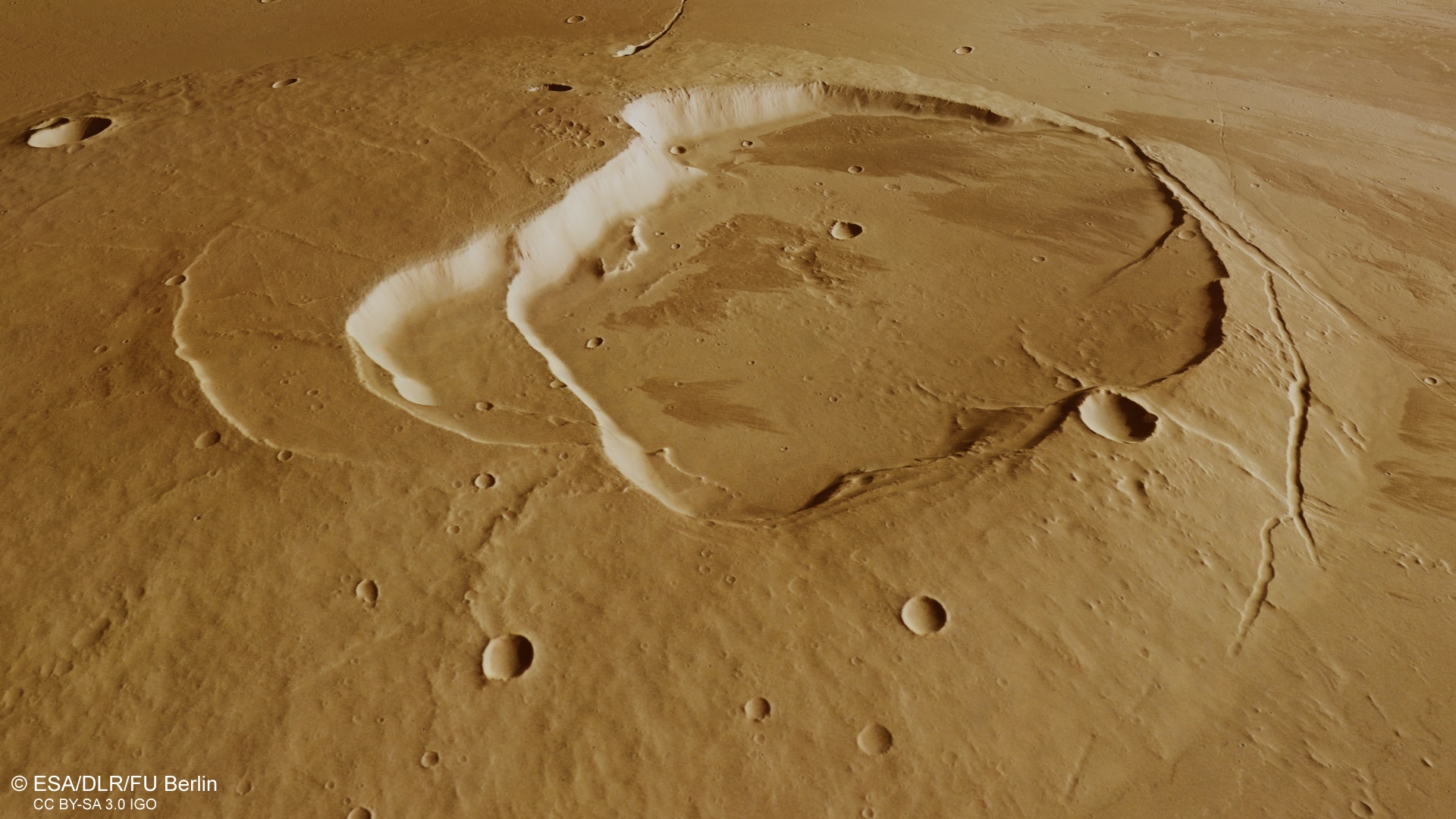ESA’s Mars Express captures geologically rich new image of Martian volcano
Jovis Tholus' complex caldera system comprises at least five craters, with the largest one spanning about 28 km in width. The calderas step down towards the southwest where the youngest eventually meets with the surrounding sea of even younger lava flows.

- Country:
- France
The European Space Agency's Mars Express has captured a geologically rich new image of Jovis Tholus, a shield volcano in the Tharsis region of Mars.
The oblique perspective view of the Martian volcano was generated from the digital terrain model and the nadir and colour channels of the High Resolution Stereo Camera (HRSC) onboard the Mars Express. HRSC, the first fully functional stereo camera in the history of planetary research, performs high resolution digital terrain models of the martian surface.
Jovis Tholus' complex caldera system comprises at least five craters, with the largest one spanning about 28 km in width. The calderas step down towards the southwest where the youngest eventually meets with the surrounding sea of even younger lava flows.
To the north of the region lies a 30-km-wide impact crater which was formed when an asteroid or comet crashed into the surface, penetrating the layers below. As described by ESA, its fractured floor and the fluidised nature of the ejected material around the central crater points to the impactor striking a water- or ice-saturated ground. More evidence of this region's watery past lies to the northwest of the crater.
📷 This oblique perspective view of the Jovis Tholus shield volcano on #Mars was generated from the digital terrain model and the nadir and colour channels of the High Resolution Stereo Camera on ESA’s #MarsExpress 👉 https://t.co/vbteIc0Ijb pic.twitter.com/TW3Qm7d16M
— ESA (@esa) January 29, 2022
Mars Express has been orbiting Mars since 2003 and has provided countless breath-taking views of the Red Planet since then. The mission's main objective is to study the martian atmosphere and climate, the planet’s structure, its mineralogy and its geology, and to search for traces of water.
Mars Express has also provided relay communication services between the Earth and the NASA rovers on the Martian surface.










